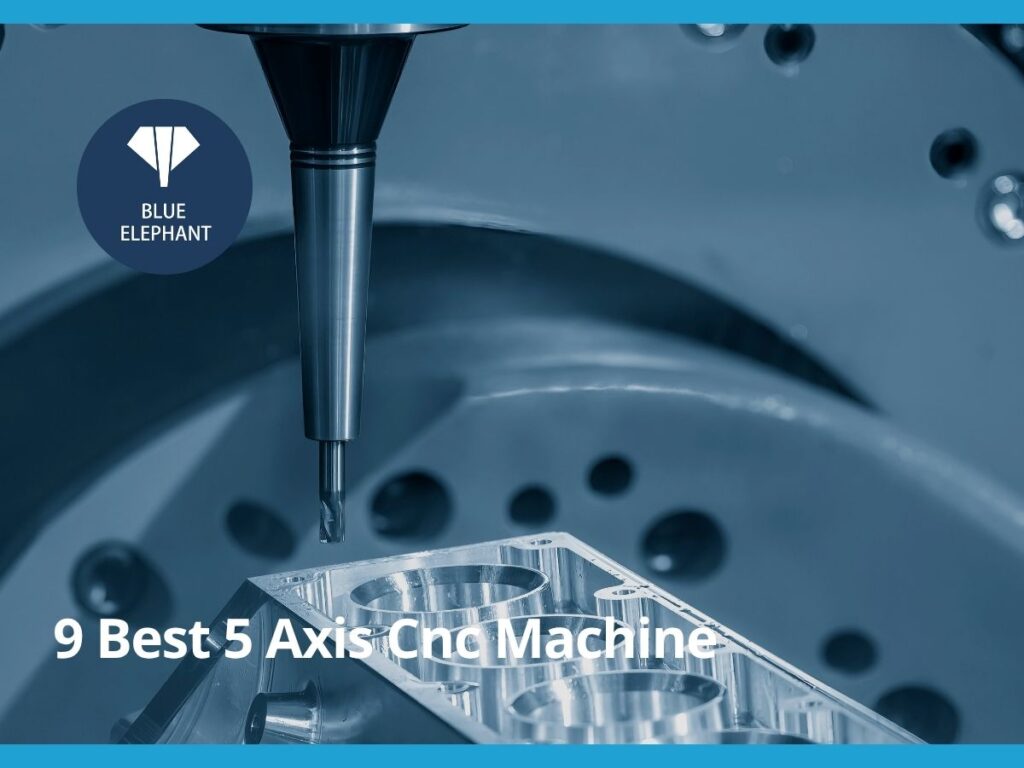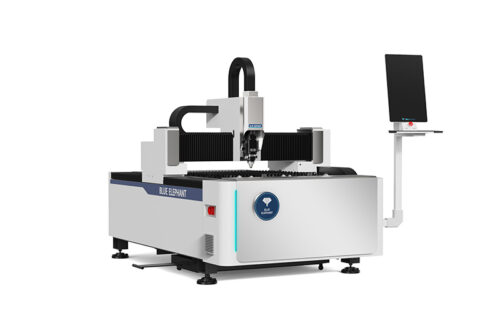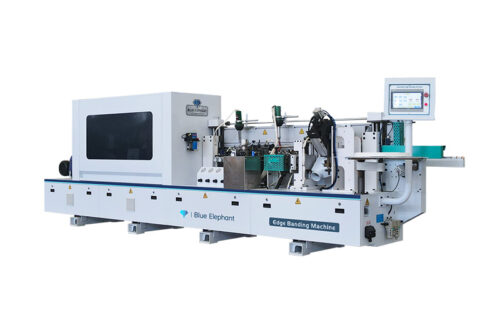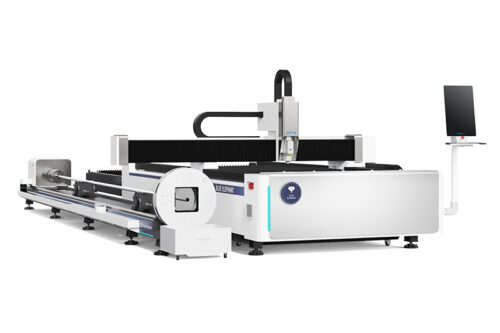Finding the right 5 axis CNC machine took me 3 tries. The first was too slow. The second broke after a month. The third? That one finally got the job done.
That’s why I’m writing this—to help you skip the trial and error.
I’ve worked with many machine shops, from small mold makers to larger factories. I’ve seen what lasts, what breaks, and what gives the best value.
In this guide, I’ll show you 9 great 5 axis CNC machines. Each one has been used in real jobs and checked by people who rely on them every day.
By the end, you’ll have a smart list of options you can trust.
Let’s get started!
Table Comparison
Choosing the right 5-axis CNC machine depends on factors like precision, speed, automation, and workpiece capacity. This table provides a quick side-by-side comparison to help you identify the best fit for your business needs:
| Machine | Travel (X, Y, Z) (mm) | Spindle Speed (RPM) | Tool Capacity | Table Size (mm) | Control System | Best For |
| Haas UMC-750 | 762 x 508 x 508 | 12,000 (15,000 optional) | 40+1 ATC | 500 diameter | Haas CNC | Affordable precision-focused machining |
| DMG MORI DMU 50 | 650 x 520 x 475 | 20,000 | 30 ATC (60 optional) | 630 diameter | Heidenhain TNC 640 / Siemens 840D | Compact, space-efficient high-precision machining |
| Blue Elephant ELECNC-1325 | 1300 x 2500 x 600 | 24,000 | 8 ATC | Vacuum adsorption | Syntec Control | High-speed routing for wood, plastic, soft metals |
| Mazak VARIAXIS i-700 | 850 x 700 x 500 | 18,000 (20,000 optional) | 30 ATC (60 optional) | 700 diameter | Mazatrol SmoothX | Premium high-speed precision machining |
| Okuma MU-5000V | 1050 x 560 x 460 | 15,000 (20,000 optional) | 32 ATC (64 optional) | 500 diameter | Okuma OSP-P300M | High-speed machining with thermal stability |
| Hermle C400 | 850 x 700 x 500 | 18,000 (25,000 optional) | 38 ATC | 440 diameter | Heidenhain TNC 640 | Stability and precision for complex machining |
| Makino D200Z | 300 x 300 x 250 | 30,000 | 60 ATC | 200 diameter | Makino Professional 6 | Ultra-precision for mold and fine detail work |
| GF Mikron MILL P 500 U | 500 x 450 x 350 | 20,000 | 30 ATC (expandable to 60) | 400 diameter | Heidenhain TNC 640 | Long-term accuracy for aerospace, medical, tooling |
| Doosan DVF 5000 | 650 x 765 x 500 | 12,000 (18,000 optional) | 30 ATC (expandable) | 500 diameter | FANUC 31i-B5 | Compact machining with automation potential |
1. Haas UMC-750
The first time I saw the Haas UMC-750 in action, I knew it was built for serious machining. The smooth 5-axis movements, rigid construction, and user-friendly interface made complex milling look effortless. If you need a reliable CNC machine that balances affordability and performance, this one deserves attention.
Specifications
- Travel (X, Y, Z): 762 x 508 x 508 mm
- Spindle Speed: 12,000 RPM (15,000 RPM optional)
- Tool Capacity: 40+1 ATC
- Table Size: 500 mm diameter
- Max Workpiece Weight: 300 kg
- Control System: Haas CNC
- Machine Weight: ~6,900 kg
Pros and Cons
Pros
- Solid build for high-precision machining
- Affordable compared to similar 5-axis machines
- Haas control system is easy to learn
- Good for both small and medium production runs
- Strong support network and available parts
Cons
- Lacks some advanced automation features
Takeaway Note:
The Haas UMC-750 is best for machine shops needing an affordable, precision-focused 5-axis CNC without a steep learning curve. However, if you require faster cycle times or advanced automation, you may need a higher-end model.

2. DMG MORI DMU 50
The DMU 50 is a high-precision 5-axis CNC milling machine designed for versatility. The first time I operated it, I was surprised by how smooth and precise it felt. Despite its compact size, it handled complex 5-axis cuts like a high-end production machine. With its tilting rotary table and rigid design, it’s ideal for industries requiring fine details and tight tolerances.
Specifications
- Travel (X, Y, Z): 650 x 520 x 475 mm
- Spindle Speed: 20,000 RPM
- Tool Capacity: 30 ATC (60 optional)
- Table Size: 630 mm diameter
- Max Workpiece Weight: 300 kg
- Control System: Heidenhain TNC 640 / Siemens 840D
- Machine Weight: ~8,000 kg
Pros and Cons
Pros
- High spindle speed for fine surface finishes
- Compact design saves space without sacrificing performance
- Precise, smooth 5-axis movement for complex parts
- Strong rigidity for heavy cutting
- Reliable control systems with advanced programming features
Cons
- Not suited for very large or heavy components
- May require additional automation for high-volume production
Takeaway Note:
The DMG MORI DMU 50 is best for businesses needing a space-efficient, high-precision 5-axis CNC with excellent rigidity. However, if you frequently work with oversized parts or need a heavy-duty cutting machine, you might need a larger alternative.

3. Blue Elephant ELECNC-1325
The ELECNC-1325 is a 5-axis CNC router designed for industries that work with wood, plastic, and non-ferrous metals. Unlike heavier milling machines, this router is engineered for high-speed, intricate carving and machining. It’s an ideal fit for furniture, signage, and mold-making businesses that need flexibility.
Specifications
- Working Area (X, Y, Z): 1300 x 2500 x 600 mm
- Spindle Speed: 24,000 RPM
- Tool Capacity: 8 ATC (Automatic Tool Changer)
- Table Type: Vacuum adsorption
- Control System: Syntec Control
- Frame Structure: Heavy-duty steel
Pros and Cons
Pros
- High-speed cutting for wood, plastic, and aluminum
- Automatic tool changer improves workflow efficiency
- Strong frame design reduces vibration for smoother cuts
- Large working area for bigger projects
- Affordable compared to industrial milling machines
Cons
- May require skilled operators for complex programming
Takeaway Note:
The Blue Elephant ELECNC-1325 is best for manufacturers working with wood, plastics, and soft metals. It’s a great choice if you need speed and precision without the cost of a full industrial milling machine.

4. Mazak VARIAXIS i-700
There was a moment during a medical parts run when I realized just how capable the Mazak VARIAXIS i-700 really is. Watching it handle tight-radius contours and deep pocketing in a single setup—it honestly saved hours we used to spend on repositioning. This machine isn’t just fast; it’s built for real-world complexity where accuracy and efficiency can’t be compromised.
Specifications
- Travel (X, Y, Z): 850 x 700 x 500 mm
- Spindle Speed: 18,000 RPM (20,000 RPM optional)
- Tool Capacity: 30 ATC (60 optional)
- Table Size: 700 mm diameter
- Max Workpiece Weight: 500 kg
- Control System: Mazatrol SmoothX
- Machine Weight: ~10,000 kg
Pros and Cons
Pros
- High-speed cutting for advanced manufacturing needs
- Simultaneous 5-axis movement reduces setup time
- Rigid structure ensures stability in high-precision cuts
- SmoothX control system simplifies complex programming
- Great for aerospace and medical industries requiring tight tolerances
Cons
- Higher price point compared to entry-level 5-axis machines
- May require operator training for Mazatrol controls
Takeaway Note:
The Mazak VARIAXIS i-700 is best for manufacturers who need premium high-speed, high-precision machining in demanding industries. However, if your team lacks experience with Mazatrol controls, operator training may be required to maximize its capabilities.

5. Okuma MU-5000V
I still remember the first time I saw the Okuma MU-5000V in action. The speed was impressive, but what really stood out was the unmatched accuracy in every cut. If your business demands high-speed machining with tight tolerances, this machine is a strong contender.
It is a high-precision vertical 5-axis machining center designed for complex part manufacturing. It’s built for industries like aerospace, medical, and high-end mold making, where rigidity, speed, and accuracy are non-negotiable. With simultaneous 5-axis cutting, it reduces setup time and increases efficiency.
Specifications
- Travel (X, Y, Z): 1,050 x 560 x 460 mm
- Spindle Speed: 15,000 RPM (20,000 RPM optional)
- Tool Capacity: 32 ATC (64 optional)
- Table Size: 500 mm diameter
- Max Workpiece Weight: 500 kg
- Control System: Okuma OSP-P300M
- Machine Weight: ~12,000 kg
Pros and Cons
Pros
- High rigidity for stable and precise machining
- Thermo-Friendly Concept minimizes heat distortion
- Simultaneous 5-axis cutting reduces cycle times
- Okuma’s OSP control system allows for easy programming
- Great for industries requiring precision and complex part geometry
Cons
- Larger footprint compared to compact 5-axis machines
- Higher upfront investment than some mid-range model
Takeaway Note:
The Okuma MU-5000V is best for businesses that need high-speed, precision machining with rigid stability and heat control. However, if floor space is limited, this larger machine might not be the best fit for your shop.

6. Hermle C400
There’s something about the Hermle C400 that immediately gives off confidence. From its rigid cast iron frame to its seamless 5-axis motion, this machine is clearly built for precision. If you’re working in toolmaking, aerospace, or medical fields, the C400 checks all the boxes for accuracy, stability, and long-term performance.
What stood out to me was how effortlessly it handled intricate parts with complex toolpaths. You don’t need to babysit it—it holds tolerances, even during long runs and tight jobs.
Specifications
- Travel (X, Y, Z): 850 x 700 x 500 mm
- Spindle Speed: 18,000 RPM (25,000 RPM optional)
- Tool Capacity: 38 ATC (optional upgrades available)
- Table Size: 440 mm diameter
- Max Workpiece Weight: 600 kg
- Control System: Heidenhain TNC 640
- Machine Weight: ~10,000 kg
Pros and Cons
Pros
- Rigid cast iron frame for extreme stability
- High-speed precision cutting for tight tolerances
- Simultaneous 5-axis control for reduced setup time
- Ideal for aerospace, medical, and tool manufacturing
- Reliable Heidenhain control system with advanced programming options
Cons
- Not ideal for very large or heavy-duty materials
Takeaway Note:
The Hermle C400 is best for manufacturers needing a highly rigid, stable, and precise 5-axis milling machine for complex part manufacturing. However, if your operators aren’t experienced with advanced control systems, programming may require additional training.

7. Makino D200Z
Precision means everything when you’re machining parts where even a slight error can ruin the whole job. The first time I saw the Makino D200Z in a mold shop, it was cutting a small cavity with insane detail—clean edges, polished-like finish, and zero secondary work needed. It’s compact, but don’t let the size fool you. This machine was clearly made for those who expect perfection with every pass.
If you’re working in mold making, medical tooling, or tight-tolerance aerospace components, the D200Z has what it takes. It feels purpose-built for the kind of jobs where most machines need finishing—but this one just gets it right from the start.
Specifications
- Travel (X, Y, Z): 300 x 300 x 250 mm
- Spindle Speed: 30,000 RPM
- Tool Capacity: 60 ATC
- Table Size: 200 mm diameter
- Max Workpiece Weight: 75 kg
- Control System: Makino Professional 6
- Machine Weight: ~7,500 kg
Pros and Cons
Pros
- Ultra-high spindle speed for mirror-like surface finishes
- Extreme precision for fine detail work
- Compact design ideal for small, intricate parts
- Simultaneous 5-axis control eliminates multiple setups
- Great for mold and medical industries
Cons
- Limited workpiece size compared to larger machines
- Higher cost due to advanced precision features
Takeaway Note:
The Makino D200Z is best for businesses that require ultra-high spindle speeds and fine-detail machining in mold and medical industries. However, if your production requires machining large, heavy workpieces, a larger-capacity machine will be necessary.

8. GF Machining Solutions Mikron MILL P 500 U
Running a production floor means dealing with tight tolerances, strict deadlines, and demanding materials. I’ve worked with machines that struggle to keep up, but the Mikron MILL P 500 U consistently delivers flawless precision and reliability. If your business relies on high-accuracy machining, this machine is built for the job.
Specifications
- Travel (X, Y, Z): 500 x 450 x 350 mm
- Spindle Speed: 20,000 RPM
- Tool Capacity: 30 ATC (expandable to 60)
- Table Size: 400 mm diameter
- Max Workpiece Weight: 200 kg
- Control System: Heidenhain TNC 640
- Machine Weight: ~8,000 kg
Pros and Cons
Pros
- Unmatched precision for complex parts
- Thermal stability system reduces accuracy loss
- Simultaneous 5-axis movement cuts setup time
- Strong rigidity for high-speed cutting
- Ideal for aerospace, medical, and mold applications
Cons
- Premium pricing due to advanced capabilities
- Not built for heavy material removal
Takeaway Note:
The Mikron MILL P 500 U is best for manufacturers needing long-term accuracy and precision in complex aerospace, medical, and tooling applications. However, if your workload includes frequent heavy material removal, this machine may not be the most efficient option.

9. Doosan DVF 5000
I’ve worked with machines that were either too bulky or lacked the power needed for precision machining. The Doosan DVF 5000 strikes a perfect balance. It’s compact yet powerful, making it a great fit for businesses that need high-performance 5-axis machining in a smaller footprint.
Specifications
- Travel (X, Y, Z): 650 x 765 x 500 mm
- Spindle Speed: 12,000 RPM (18,000 RPM optional)
- Tool Capacity: 30 ATC (expandable)
- Table Size: 500 mm diameter
- Max Workpiece Weight: 400 kg
- Control System: FANUC 31i-B5
- Machine Weight: ~10,000 kg
Pros and Cons
Pros
- Compact design fits smaller shops without sacrificing performance
- High-speed cutting for efficient production
- Simultaneous 5-axis machining reduces manual repositioning
- Rigid construction ensures accuracy in high-tolerance machining
- Automation-ready for lights-out manufacturing
Cons
- Lower spindle speed compared to ultra-high-speed machines
- May require extra setup for heavy or oversized parts
Takeaway Note:
The Doosan DVF 5000 is best for businesses that need a compact, high-precision CNC machine with strong automation capabilities. However, if ultra-fast spindle speeds or larger workpiece capacity are required, a more powerful model might be better.

Conclusion
A 5-axis CNC machine is more than just equipment—it’s an investment in speed, accuracy, and profitability. This guide helped you compare the top machines and find the best fit.
I took the leap once, and it changed how I worked. Now, it’s your turn. The right machine can eliminate bottlenecks, improve quality, and boost output.
Still stuck on which to choose? Start with Blue Elephant. It’s fast, budget-friendly, and gets the job done.
Take action now. Contact us today!
Explore More of Our Resources
Want to see more products? We’ve got plenty of options that might just be the perfect fit for you:
Still haven’t found what you’re looking for? Don’t hesitate to contact us. We’re available around the clock to assist you.













